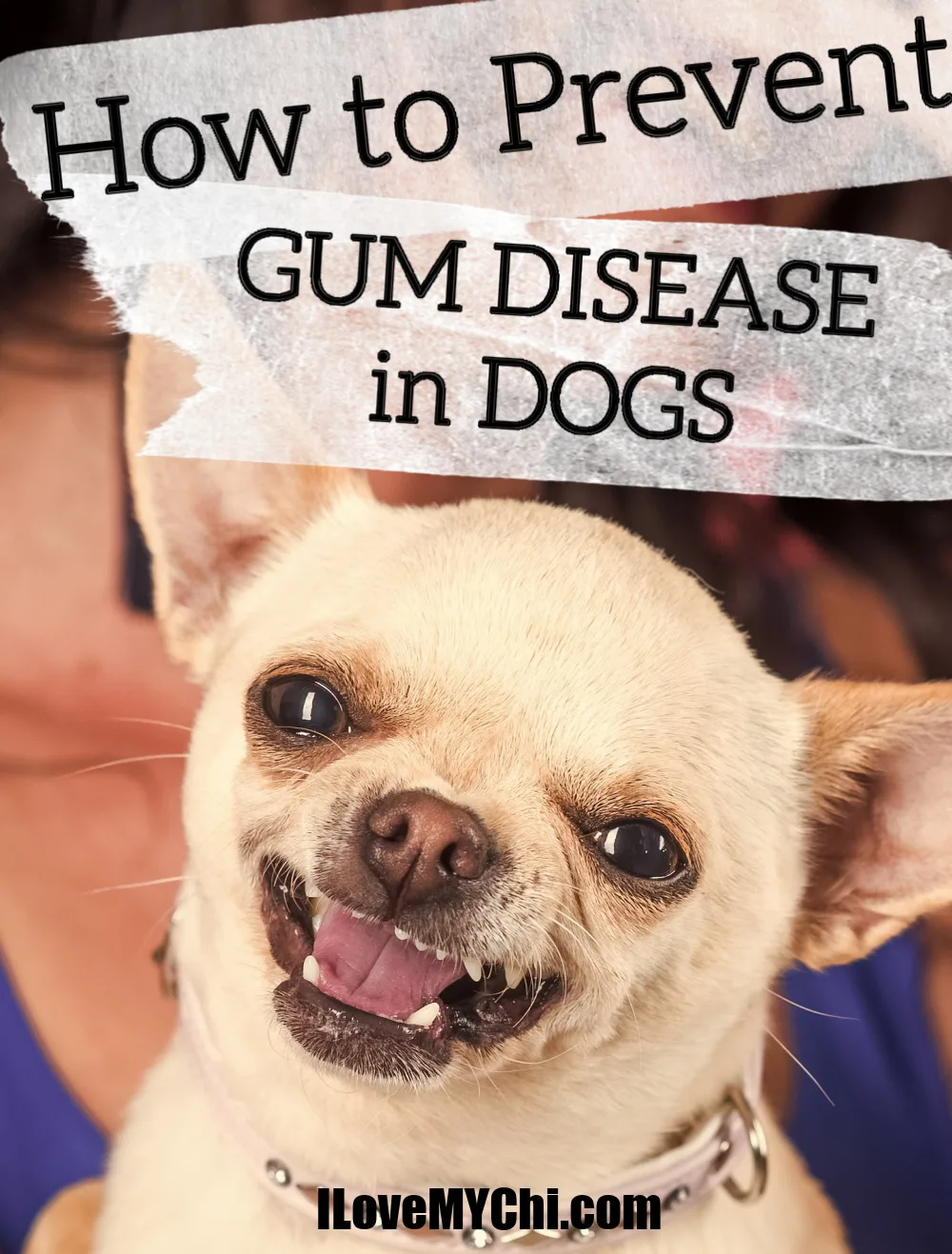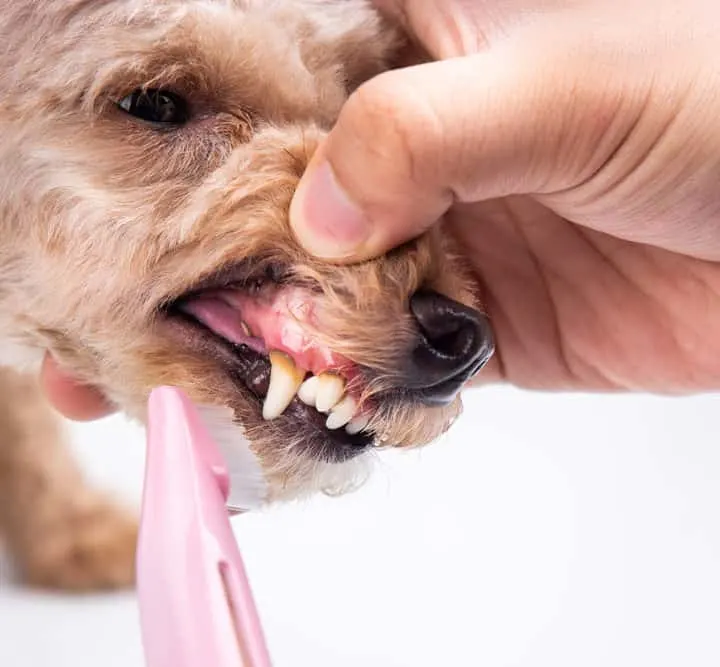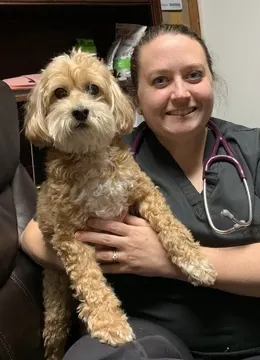Bleeding gums, problems chewing, and bad breath is all signs of canine gum disease. Small breeds like chihuahuas, are specially prone to dental problems. Find out how to prevent this common problem in dogs.

Gum disease in dogs is surprisingly common, with up to eighty-five percent of dogs having some degree of it – and the problems don’t stop with a dog’s mouth. Canine gum disease can increase the risk of heart disease in a dog and can lead to tooth loss as well. It can also cause problems with the kidneys, liver, and joints.
Gum disease is caused by plaque that builds up on a dog’s teeth. This plaque contains bacteria which cause the infection in the gums and bone loss.
Because gum disease in dogs is a serious health problem, it’s important to be aware of the symptoms and know how to prevent this prevalent canine dental problem.

What are the Symptoms of Gum Disease in Dogs?
Symptoms of gum disease in dogs can be:
- Swelling and redness around or near the mouth.
- Bleeding gums (bleeding on probing).
- Excessive drooling.
- Wounds on the oral tissues caused by chewing and scratching.
- Bad breath (halitosis) that is persistent.
- Problems chewing on toys or bones.
- Dog may claw at their mouth with their paws.
These all signal problems with the health of a dog’s gums and teeth. Watch for these signs and do regular canine dental exams at least once a month to look for new problems.
One of the best ways to assess a dog’s teeth and gums is to lift up the lip and do an exam using a penlight or flashlight. Look for signs of tooth discoloration, dark spots on the gums, inflamed gums, and tartar along the gum line.

How to Prevent Canine Gum Disease
Many people don’t brush their dog’s teeth, which is unfortunate since this can prolong the life of their canine companion. Ideally, a dog should have his teeth brushed once a day. At the very least, it should be done once a week.
Check out this post on how to take care of your dog’s teeth. It’s not difficult to learn but it isn’t fun either. Many dogs don’t like it so offer a reward after the brushing such as a dog dental treat or a walk.
Regular tooth brushing and scheduled veterinary visits for health maintenance are the most important steps for preventing gum disease in dogs, but there are other ways to reduce the risk of dog dental problems.
- A diet consisting of dry kibble helps to reduce plaque buildup – the forerunner to canine gum disease.
- Bones and dental chews (I give my dogs Ark Naturals) specifically designed for dog teeth cleaning are available online and at most pet stores and do an effective job of reducing tartar along the gum line. Dogs enjoy them too.
- Chew toys if your dog enjoys chewing and playing with toys.
- Plenty of clean water to help wash the bacteria away.
- Oral supplements for dental health.
Even with regular teeth cleaning, some dogs will still need a professional cleaning every six months by a veterinarian to remove tartar. This should be a regular part of a dog’s health maintenance.
The Bottom Line?
Canine gum disease is a serious problem that affects more than a dog’s mouth – it could shorten their life. Fortunately, it’s a problem that’s often preventable with good dog dental care.
Share your experience about your dog’s gums and dental issues in the comments!


Dr. Sara Ochoa
DVM
This article has been fact-checked and approved by Dr. Sara Ochoa DVM. You can read more about her on our About page.

Sue
Saturday 18th of September 2021
I brush my fur baby’s teeth. Since she had lost so many teeth, I started brushing them. She hasn’t had a cleaning in 3-4 years. The vet always says her teeth (what are left) look great for her age. In Arizona, the highest we ever paid for a cleaning was under $200 - compared to Oregon where it can start around $500 and up.
Anna
Saturday 18th of September 2021
It is a shame that teeth cleaning is so varied it different parts of the country. I adopted a 9yr old chi mix recently and was shocked at the cost of getting her teeth cleaned in Northern California $1400 opposed to tops $150 in the South Eastern state that I came from. I am a retiree and literally had to go into debt to give her proper care. Now in a year I will have to do this again! My bill was 10X more than in the SE. Shocking!!!
Cathy
Saturday 18th of September 2021
Wow that is a big difference! I'd shop around. My regular vet charges $800 but the Humane Society will do it for $150.